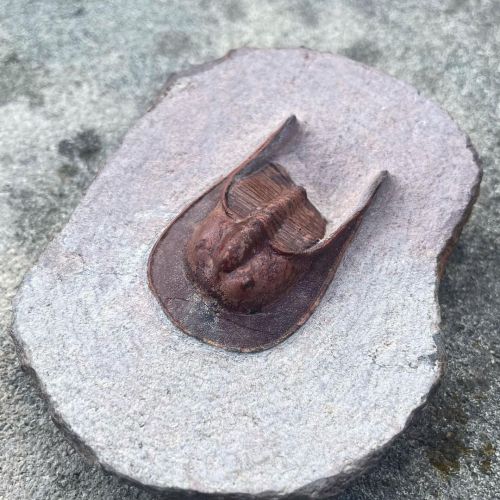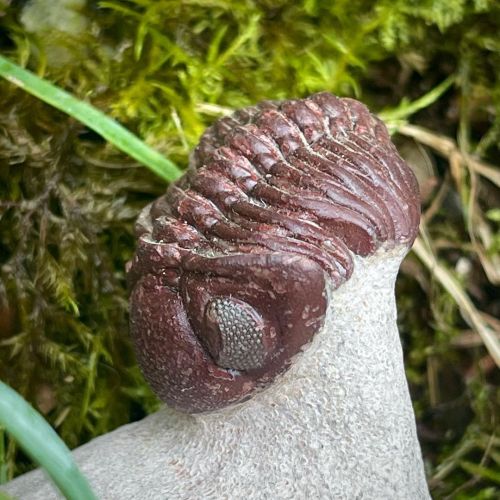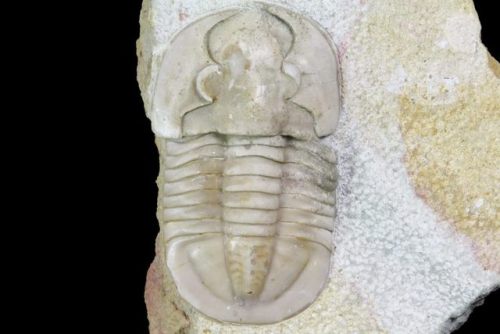#trilobites

I FINALLY finished part 1 of the Evolution of Life poster that I was doing for my class-
it’s been a passion project of mine- I wanted to attempt something like this outside of school, regardless. the history of life on earth has always fascinated me!
This first part shows the transition from simple life to complex life, and the move from sea to land.
I really hurt my hand making this, but I think it was worth it (:
Beautiful red harpes trilobite from Morocco.
This fossil dates back to the Devonian era, being over 100 million years older than the oldest dinosaur fossils.
.
Follow @neojurassica to see more #prehistoric wonders!
.
www.neojurassica.com
Dinosaur Specialists
Genuine Fossils
⚙️ Display Customisation
Free UK Delivery
✈️ International Delivery
.
#trilobite #trilobites #fossil #fossils #fossilhunting #fossilprep #fossilfriday #extinct #extinction #evolution #devonian #jurassic #jurassicworld #neojurassica #dinosaurs #palaeontology #paleontology #geology #archeology #science #nature #naturalhistory #history #discovery #animal #prehistoricanimals #prehistory
https://www.instagram.com/p/CTH6VILNZ4I/?utm_medium=tumblr
Post link
Two red trilobites with exceptional green eyes. These both date back to the Devonian era, over 360 million years ago!
.
Follow @neojurassica to see more #prehistoric wonders!
.
www.neojurassica.com
Dinosaur Specialists
Genuine Fossils
⚙️ Display Customisation
Free UK Delivery
✈️ International Delivery
.
#trilobite #trilobites #extinct #extinction #fossil #fossils #fossilfriday #paleontology #palaeontology #geology #archeology #science #nature #naturalhistory #history #prehistory #jurassicpark #neojurassica #rocks #crystals #trilobitefossil
https://www.instagram.com/p/CTFbmKttSnR/?utm_medium=tumblr
Post link
A rare & beautiful red trilobite with crystallised green eyes. An exceptional fossil, fully natural with no restoration.
.
Follow @neojurassica to see more #prehistoric wonders!
.
www.neojurassica.com
Dinosaur Specialists
Genuine Fossils
⚙️ Display Customisation
Free UK Delivery
✈️ International Delivery
.
#trilobite #trilobites #trilobitetuesday #insect #invertebrate #paleobiology #biology #science #paleontology #palaeontology #geology #nature #naturalhistory #history #archeology #natural #crystal #rare #antique #museum #naturalhistorymuseum #fossils #fossilhunting #jurassic #jurassicpark #neojurassica #fossil
https://www.instagram.com/p/CS9RsriN4wz/?utm_medium=tumblr
Post link
Beautiful Basseiarges Trilobite With Partial - Jorf, Morocco
Trilobites were a very diverse group of extinct marine arthropods. They first appeared in the fossil record in the Early Cambrian (521 million years ago) and went extinct during the Permian mass extinction (250 million years ago). They were one of the most successful of the early animals on our planet with over 25k described species, filling nearly every evolutionary niche. Due in large part to a hard exoskeleton (shell), they left a excellent fossil record.
For sale at: https://www.fossilera.com/fossils/9-basseiarges-trilobite-with-partial-jorf-morocco
Post link
Aspidonia Illustration
Ernst Haeckel in his work Kunstformen der Natur (1899-1904), grouped together these specimens, including trilobites (which are extinct) and horseshoe crabs, so the viewer could clearly see similarities that point to the evolutionary process.
This and other drawings from the Museum Library’s Rare Book collection are on view now in Natural Histories: 400 Years of Scientific Illustration from the Museum’s Library. (© AMNH/D. Finnin)
Post link
1.4" Niobella Lindstroemi Trilobite - Rare Species
This is a beautiful, 1.4" long, prone example of a rare Ordovician trilobite from the Putilovo Quarry. It’s a Niobella lindstroemi, with very nice preservation. There is only some very minor restoration on two pleural tips on the right hand side.
Trilobites were a very diverse group of extinct marine arthropods. They first appeared in the fossil record in the Early Cambrian (521 million years ago) and went extinct during the Permian mass extinction (250 million years ago). They were one of the most successful of the early animals on our planet with over 25k described species, filling nearly every evolutionary niche. Due in large part to a hard exoskeleton (shell), they left a excellent fossil record.For sale at: https://www.fossilera.com/fossils/1-4-niobella-lindstroemi-trilobite-rare-species
Post link
Beautiful, Red Arizona Petrified Wood Slab - 22.3"
This is a vibrantly colored slice of Araucarioxylon arizonicum petrified wood from Arizona. It’s Late Triassic in age and displays beautiful purple, red, and orange colorations. One side has been polished to a mirror like finish and it comes with an acrylic display stand.
The vibrant coloration is due to the contaminating minerals in the silica which replaced the original wood structure. For example pinks and reds are due to hematite, a form of oxidized iron. This is similar petrified would which is found in the Petrified Forest National Park. The petrified forest encompasses nearly 100k acres and this wood comes from land outside of the park.For sale at: https://www.fossilera.com/fossils/beautiful-red-arizona-petrified-wood-slab-22-3
Post link
Beautiful Basseiarges Trilobite With Partial - Jorf, Morocco
This is a beautiful, .9" specimen of Basseiarges from Jorf, Morocco. The rock from this locality is extremely hard with an almost glass-like texture making it difficult to prepare. This results in many specimens being “burnt” during preparation and loosing a lot of shell detail. Not this little beauty. This is also a partial specimen, running into a quartz seam in the rock.
Trilobites were a very diverse group of extinct marine arthropods. They first appeared in the fossil record in the Early Cambrian (521 million years ago) and went extinct during the Permian mass extinction (250 million years ago). They were one of the most successful of the early animals on our planet with over 25k described species, filling nearly every evolutionary niche. Due in large part to a hard exoskeleton (shell), they left a excellent fossil record.For sale at: https://www.fossilera.com/fossils/9-basseiarges-trilobite-with-partial-jorf-morocco
Post link


Nice black-and-white pictures of our trilobites by visitor Jean-Loup Dabe. You can find them in our Gallery of Evolution, in the first part of the hall. Trilobites are one of the earliest-known groups of arthropods (animals with a head, body and tail) and they stand among the most successful creatures in the history of our planet.
The first traces of these three-lobed animals are found in rocks of the Early Cambrian period, some 521 million years ago. They swam our oceans for about 300 million years! What a survivors… Exactly what caused the extinction of trilobites isn’t known, but it’s likely due to a combination of factors including environmental changes. It’s thought their populations may have been in decline for some time before a mass extinction event around 252 million years ago - the Permian-Triassic extinction - wiped them out.
They flourished to over 600 species at their zenith, with a huge variety in length – from 3mm to 72cm – of elaborate forms – some had multi-faceted eyes sitting atop towering stalks – and unique feeding strategies – some of them predatory, some of them squeezing the nutrients from mud, and some of them free-swimming.
The species in the picture is Ellipsocephalus hoffi. This species was blind and lived in deep, poorly lit habitats. It’s a common trilobite mainly from central Europe.
@amnhnyc has made a marvelous website dedicated to the terrific trilobites.
[Pictures:@jeanloupmhd, Instragram]
Art Request 3 Filled for obfuscobble
I really hope this was what you were asking for? I’m sorry if I got your request wrong and if it was part of a fandom I wasn’t aware of >w>;
I added a small pair of trilobites frolicking in the background ;D
Post link















